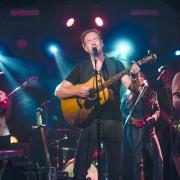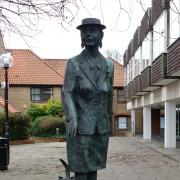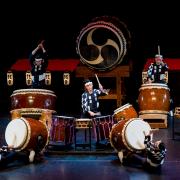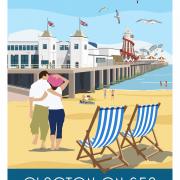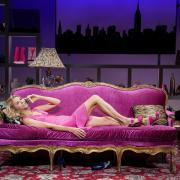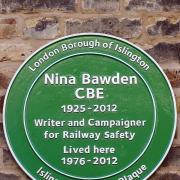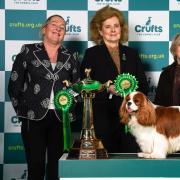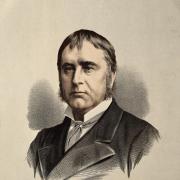In his new book, Full Circle, David Dunford traces the history of horse racing in Chelmsford and uncovers a lost world which began more than 250 years ago. Here he shares some of that story

While many may think that the arrival of Chelmsford City Racecourse at Great Leighs brought a new attraction to Chelmsford, there has actually been horse racing in this part of Essex for more than a quarter of a millennium.
At the end of the 18th and the beginning of the 19th centuries, horse races were the highlight of the entertainment calendar across England. In Essex, thousands flocked to meetings in nearly a dozen towns and villages, including Brentwood, Maldon, Southminster, Colchester and Epping. But by far the most successful and popular races were staged at Chelmsford.

Although local legend has it that races at Galleywood Common date back to the time of Charles I, the first recorded reference points to 1759. So popular were these races that in the 1770s the local gentry raised money for a permanent grandstand on the common where they could watch safely isolated from the lower classes.
Horse racing in the late 18th and early 19th centuries was very different to the sport we know today. Organised gambling was unknown and betting was largely confined to the upper classes. Horses were older since, before the coming of the railways, they had to be walked between meetings and young animals couldn’t stand the strain.

Fields were smaller too – often with no more than a dozen horses involved in a three-day meeting. The lack of entries was made up for by running races in as many as three heats, usually of three or four miles. Because of the number of heats and the length of the races, horses often began at a trot then moved into a canter and only began to gallop over the last mile or so. So it was not surprising that through these race meetings, other attractions evolved.
For the aristocracy and wealthy these involved the many grand social events organised in Chelmsford to coincide with the race meetings at Galleywood, including glamourous balls, dinners and concerts. Indeed, in the early 19th century it often appeared that the social occasions were more important than the horse racing itself. One newspaper report described two days of racing as ‘very uninteresting’, while the, ‘balls, public breakfasts and theatre were very fashionably attended’.

Exciting or not, the races attracted the cream of society. There was great excitement in 1814 when the Duke of Wellington was among the spectators. 20 years earlier a breathless newspaper reporter noted the social events had been attended by a particularly large number of aristocrats and, ‘also by a very numerous train of the first beauty and fashion of the county...’
For the great mass of working people – far too poor to ever attend the great social occasions – the race meetings themselves offered a wonderful day out and the chance to meet friends in a carnival atmosphere. The racecourse was crammed with side shows – small theatres, boxing booths, jugglers, acrobats, card sharps and many beer tents.

The races were also a popular target for criminals. In 1831 a local newspaper reported, ‘of pickpockets the number was unprecedentedly large’. At another meeting around the same time, an Army captain changing hurriedly to take part in a race mistakenly gave his coat to a man he thought was his servant. Unfortunately, there was £400 in the pocket and the man made off never to be seen again. That’s the equivalent to having £30,000 stolen today.
In the 1800s the races also attracted the country’s top jockeys. Among them was Fred Archer, one of the most famous sportsmen of his day, whose tragic death was foretold at Galleywood. Walking across the course he was accosted by a gypsy woman who predicted a violent death by his own hand. Archer laughed loudly and went on his way. Seven years later he put a gun in his mouth and pulled the trigger. He was just 29.
The heyday of racing at Galleywood came in the 1860s when Admiral Henry Rous, the senior steward of the Jockey Club, was appointed to oversee meetings. A new grandstand was opened in 1863 and in the early 1870s the racecourse became unique – as with the building of St Michael’s it became the only course in the country to encircle a church.

The nature of racing changed towards the end of the 18th century as it became more professional and better organised. But, despite this, its popularity began to decline. The aristocracy, who had done so much to support the meetings, lost power and influence.
Other leisure activities began to flourish and rival courses opened up around London. Chelmsford saw the opening of three major local factories – Crompton began as early as 1878 followed later by Hoffman and Marconi – and each had thriving social clubs offering entertainment to compete with horse racing.
Furthermore, Chelmsford races, run on common land, could charge admission only to the grandstand and so income fell. Flat racing came to an end at Galleywood around 1880 and the course was converted to host steeple chasing.
Racing continued to dwindle in the years up to World War I and during the war itself racing was suspended with the grandstand taken over for Army billets and the common used as a training area. 25 pounder guns were dug in as defence against Zeppelins.
Racing resumed after the war, with thousands of pounds spent on improvements and special trains laid on to bring spectators from London. The meetings attracted top class horses such as Golden Miller, who won the Cheltenham Gold Cup five times and the Grand National.
There were some colourful owners too, including Bertram Mills of circus fame and Harry Selfridge, owner of the Oxford Street store. But the resurgence didn’t last and the crowds dwindled again. The last meeting was held at Galleywood in March 1945.
And there the history of Chelmsford Races might have ended. But in 2008, after a gap of more than 70 years, a new all-weather track opened at Great Leighs. Now run by the Betfred bookmaking chain, Chelmsford City Racecourse holds more than 60 meetings a year, along with other events such as concerts — an echo of the grand social gatherings of the past. Horse racing in Chelmsford has come full circle.
Find out more:
Full Circle — The Rise, Fall and Rise of Horse Racing in Chelmsford by David Dunford is published in February by Essex Hundred Publications and is priced at £12.99. ISBN 9780993108358




